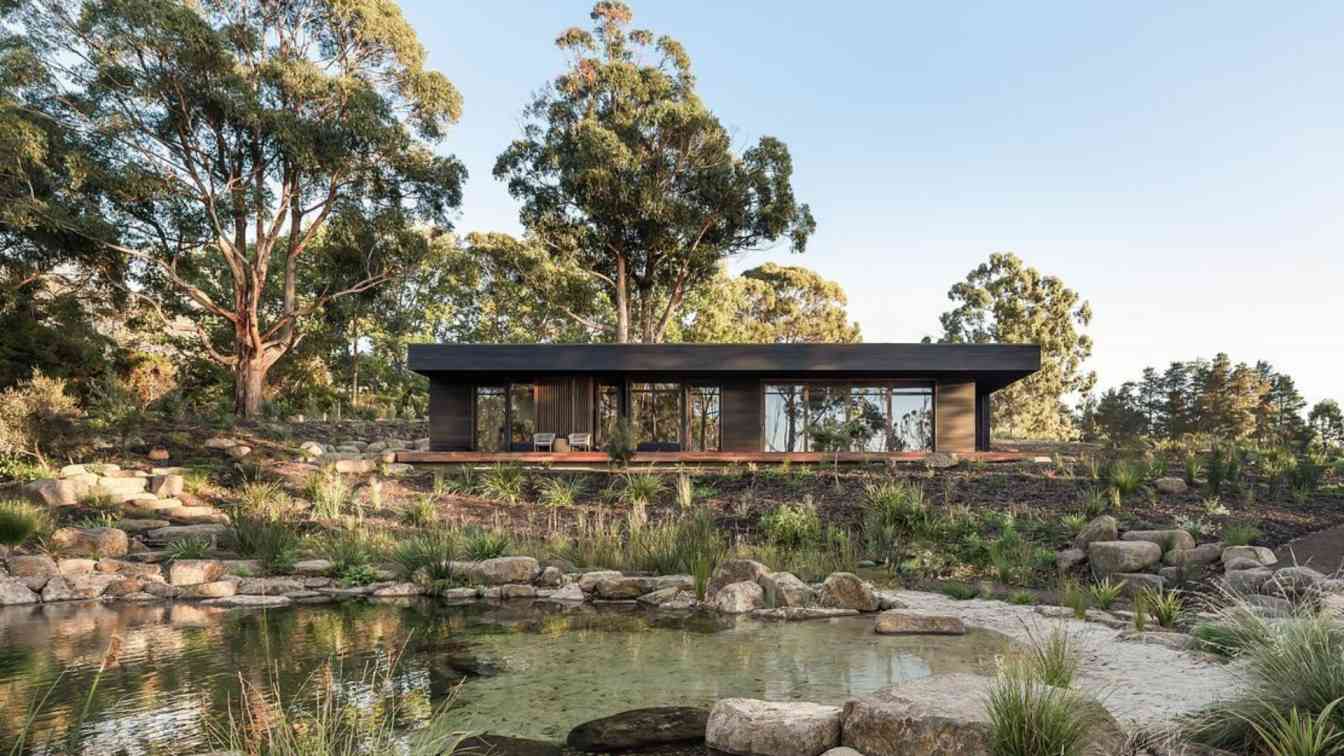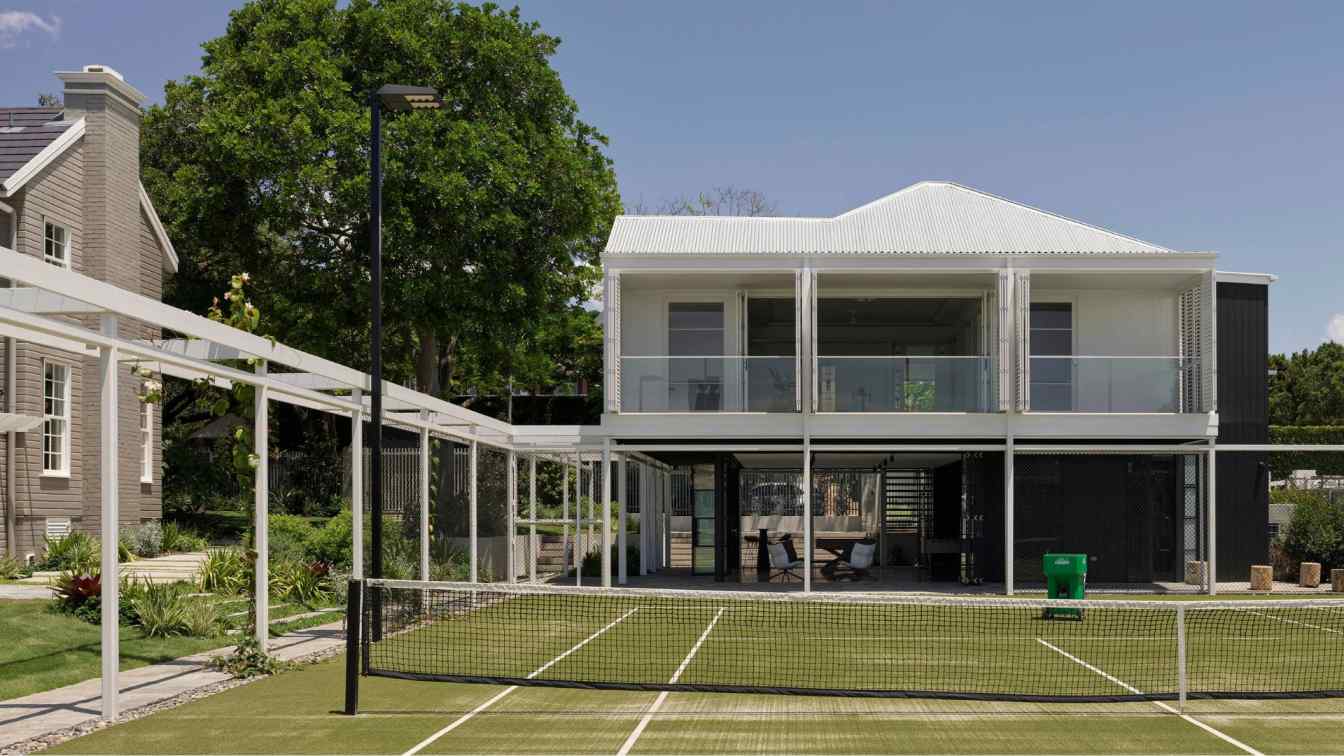MRTN Architects: Venus Bay is located in South Gippsland, a narrow peninsula of land with Bass Strait the southwest and Anderson’s Inlet to the northeast. Hide House in Venus Bay is located on the crest of a sand dune amongst coastal Tea Tree. The house enjoys views to the waterways of the inlet to the north and the grassy tidal plains to the east while turning its back to the strong predominant south westerly winds that are a common feature of the area.
Hide House is a retreat from Melbourne, a place where the owners can spend increasing periods of time living and working from Venus Bay. However, during summers and holidays the home needs to comfortably accommodate friends and family. Guest bedrooms, bunkroom and living space are located on the lower level while the upper level contains the main living spaces and owners’ bedroom. The sculptural form of the house is created by the assemblage of a curved upper level placed on and over a lower rectilinear volume.
The elevated views are a significant feature of the site; a mise-en-scène of constantly unfolding action created by the shadows of clouds passing overhead, migrating birds, roaming cattle and mobs of kangaroos passing through. Savouring the view with minimal disturbance was important to the clients and informed the design of the house from the outset. The home is an embodiment of the ‘bird hides’ or ‘look-outs’ in the local area that provide access to views of birds and wildlife while remaining concealed in the landscape.

The two forms are clad in sustainably harvested Silvertop Ash cladding, a fine shiplap board for the upper volume and a more rusticated inverse board and batten for the lower volume. The outside face of the arc turns its back to south-westerly winds and protects from afternoon sun. The elevated volume creates a sequence of sheltered external spaces and frames views through to the landscape beyond.
The bird hide typology was again referenced in the centrally located family dining area. In lieu of an exterior deck that would have been very exposed to the elements and potentially obscure views to beyond, the dining and kitchen are conceived as an outdoor room that can be open to the view and elements with an oversized sliding window. The Spotted Gum materiality of the space reinforces the indoor-outdoor nature of this room and further references the immersive timber spaces and long horizontal openings typical of the bird hide shelters.
All heating and cooking is powered by fossil fuel-free, highly energy-efficient appliances and heat pump technologies. The house is not connected to mains gas, sewer or water supply. Timber cladding is sustainably harvested and milled Silvertop Ash, which also meets the bushfire attack level requirements of the site. All rainwater is collected, ceiling fans and high operable windows create a comfortable thermal environment.







































About
MRTN Architects was formed by Antony Martin and is located in Melbourne, Australia. We have been working on a variety of interesting jobs that have included new homes – in the city and in the country, transformative renovations and stylish shops. Antony is closely involved in all projects and has over 15 years experience working as an architect in Australia and the United States.
He has been fortunate to work on significant buildings such as the Melbourne Museum, the Apollo Theatre in Harlem and the Australian Pavilion in Shanghai for World Expo. Our projects aim to have in common a considered design approach that results in buildings that use materials wisely, inherently efficient and great to be in.
The process of design is a long journey but one that is incredibly rewarding for those that go along on the ride. Our clients have made the bold choice to embark on a project and appreciate the value and experience that an architect can bring to the table.
Our approach to design is not prescriptive one, we enjoy getting to know our clients and working with them to arrive at an outcome together. This process should satisfy what is required of the brief and the desires for the project but also create something unexpected and wonderful.




.jpg)
